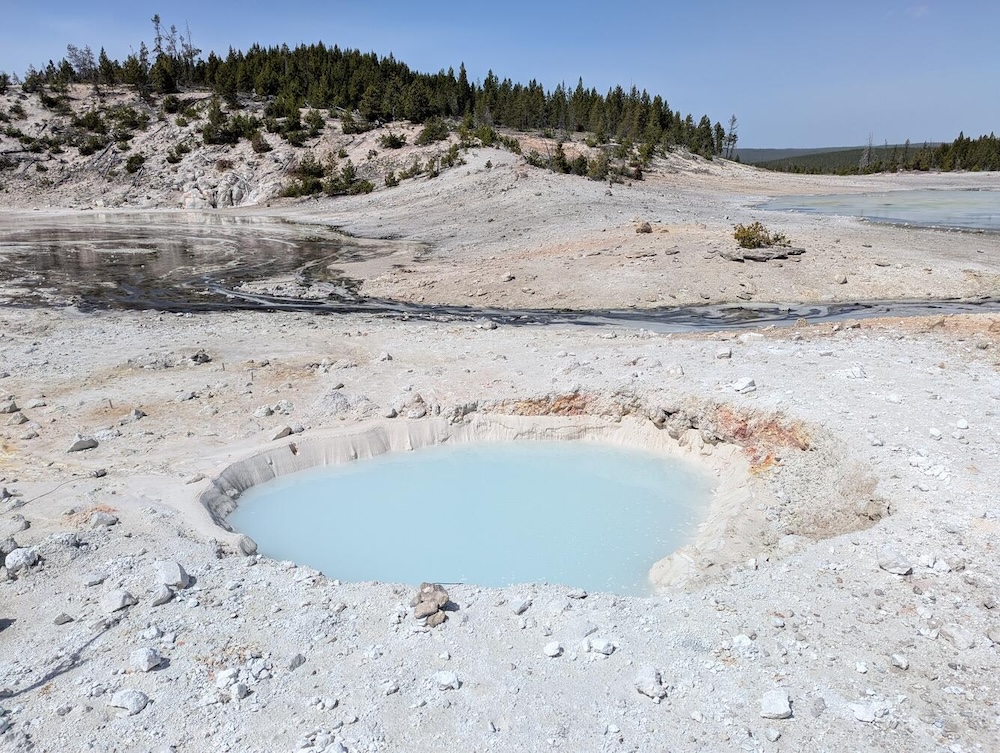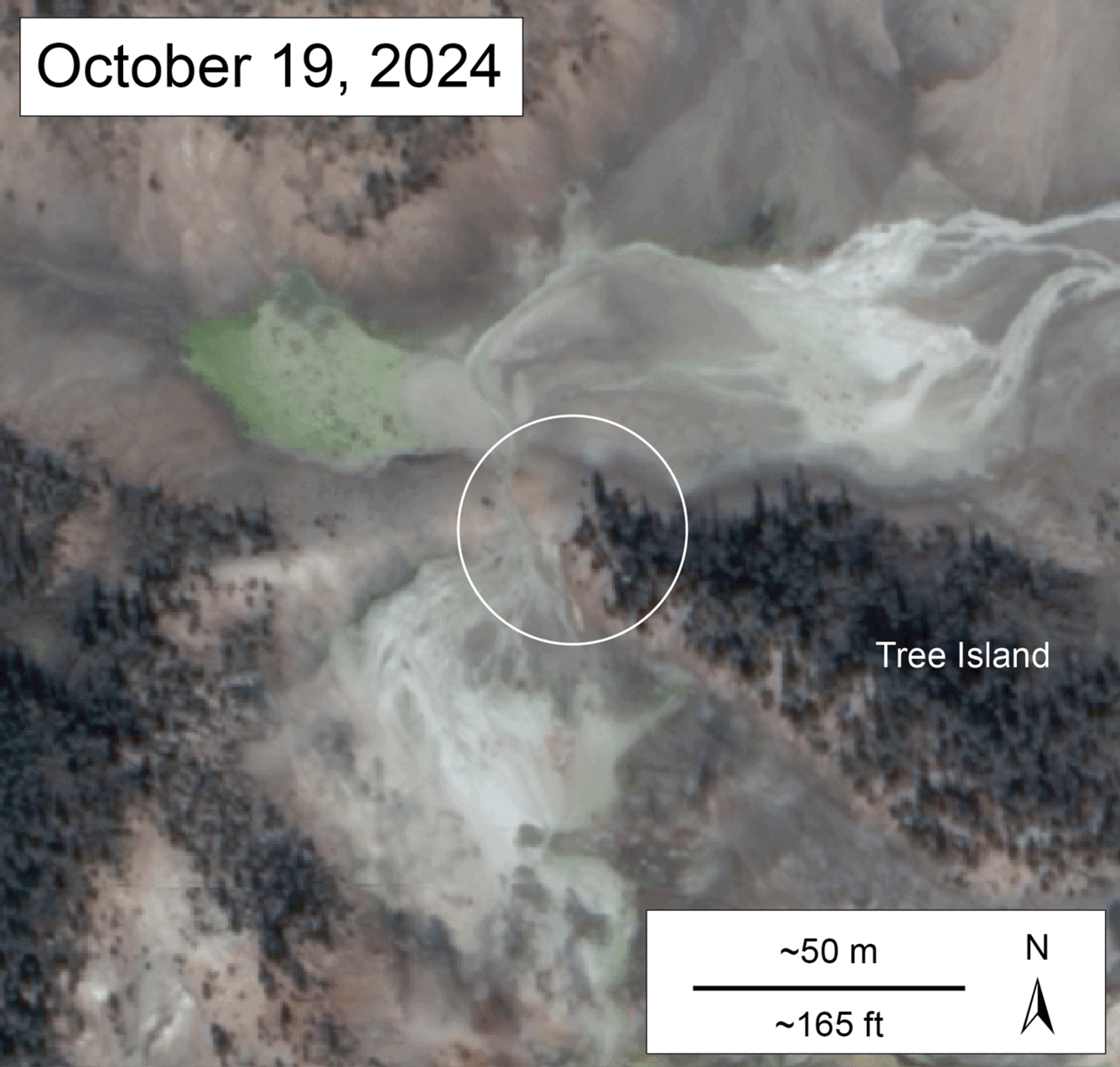In April, when Yellowstone National Park geologists made their first visit this year to the Norris Geyser Basin, they encountered a new feature they hadn’t seen before.
They were checking the area’s temperature logging stations, a routine maintenance job – but since their last visit, something was different.
Where previously there had been a rather featureless patch of ground at the northwestern tip of a landmark known informally as ‘Tree Island’, there was now a gaping hole about 4 meters (13 feet) wide, filled with milky, light blue water.
Related: Yellowstone’s Supervolcano Could Give Less Warning of an Eruption Than We Thought

Evidence of a violent birth lay scattered around the tranquil, warm waters: many rocks about 30 centimeters (1 foot) across, covered with a fine silt of light gray mud that matched the exposed walls of the young spring.
All this was evidence of a hydrothermal explosion. The team checked satellite images of the park to narrow down the timing. In December 2024, there was no sign of the hole, but by 6 January 2025, a small depression had formed. By February 13, the water-filled hole was well and truly established.

But the equipment Yellowstone park geologists use to detect hydrothermal activity had received no signal of the kind of major explosive event that could form this pool in one dramatic burst.
“Clearly the new thermal feature did not form in a single major explosive event,” USGS geophysicist Michael Poland and Yellowstone National Park geologist Jeff Hungerford write.
“Rather, it appears that the feature formed via multiple small events that initially threw rocks and later threw silica mud a short distance, creating a small pit that became filled with silica-rich water.”
This is good news, really. One of the reasons we keep such a close eye on Yellowstone’s hydrothermal activity is because of the caldera’s propensity for massive, explosive eruptions. It is a supervolcano, after all.
The report was published in the USGS Caldera Chronicles.
Source link

